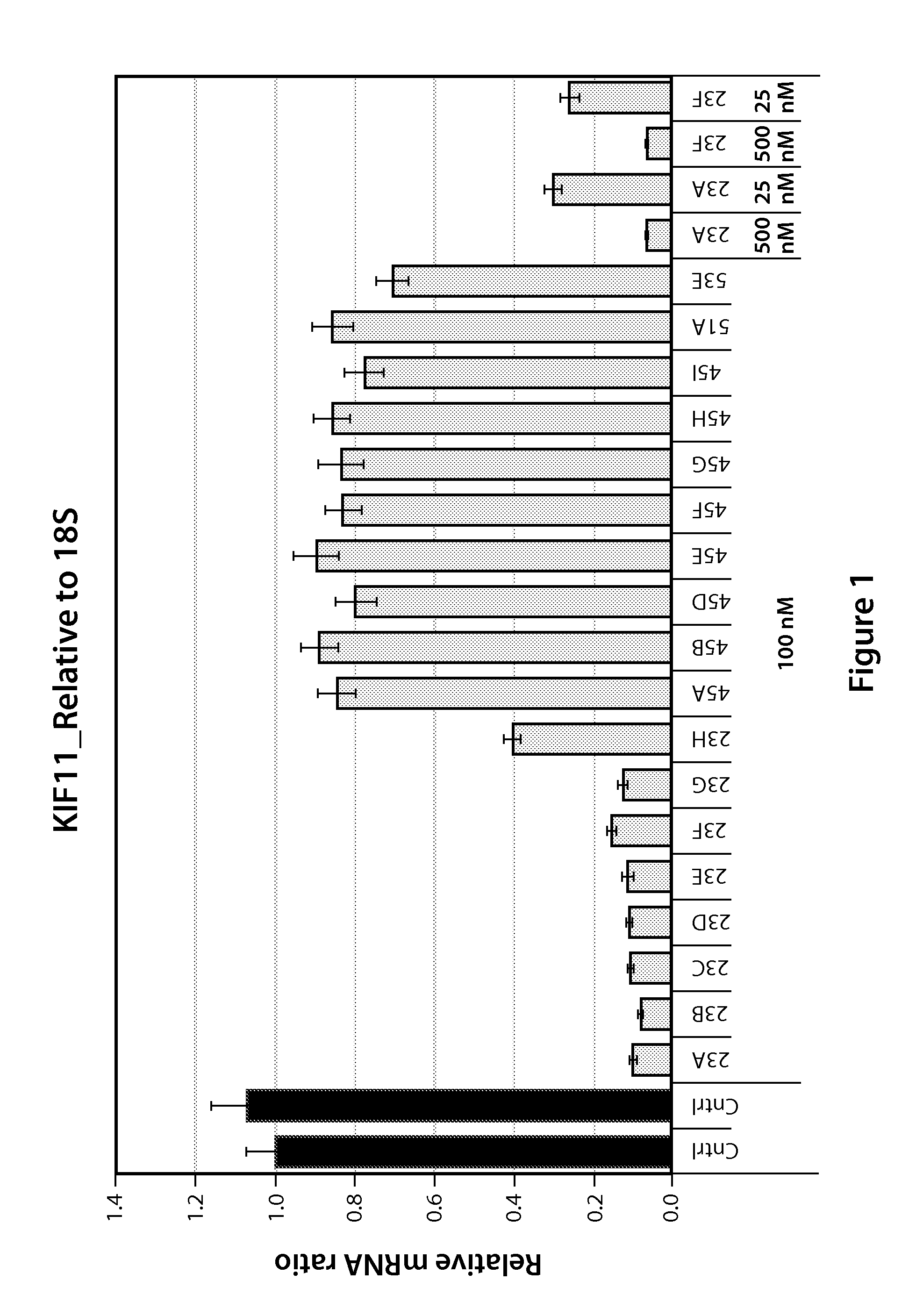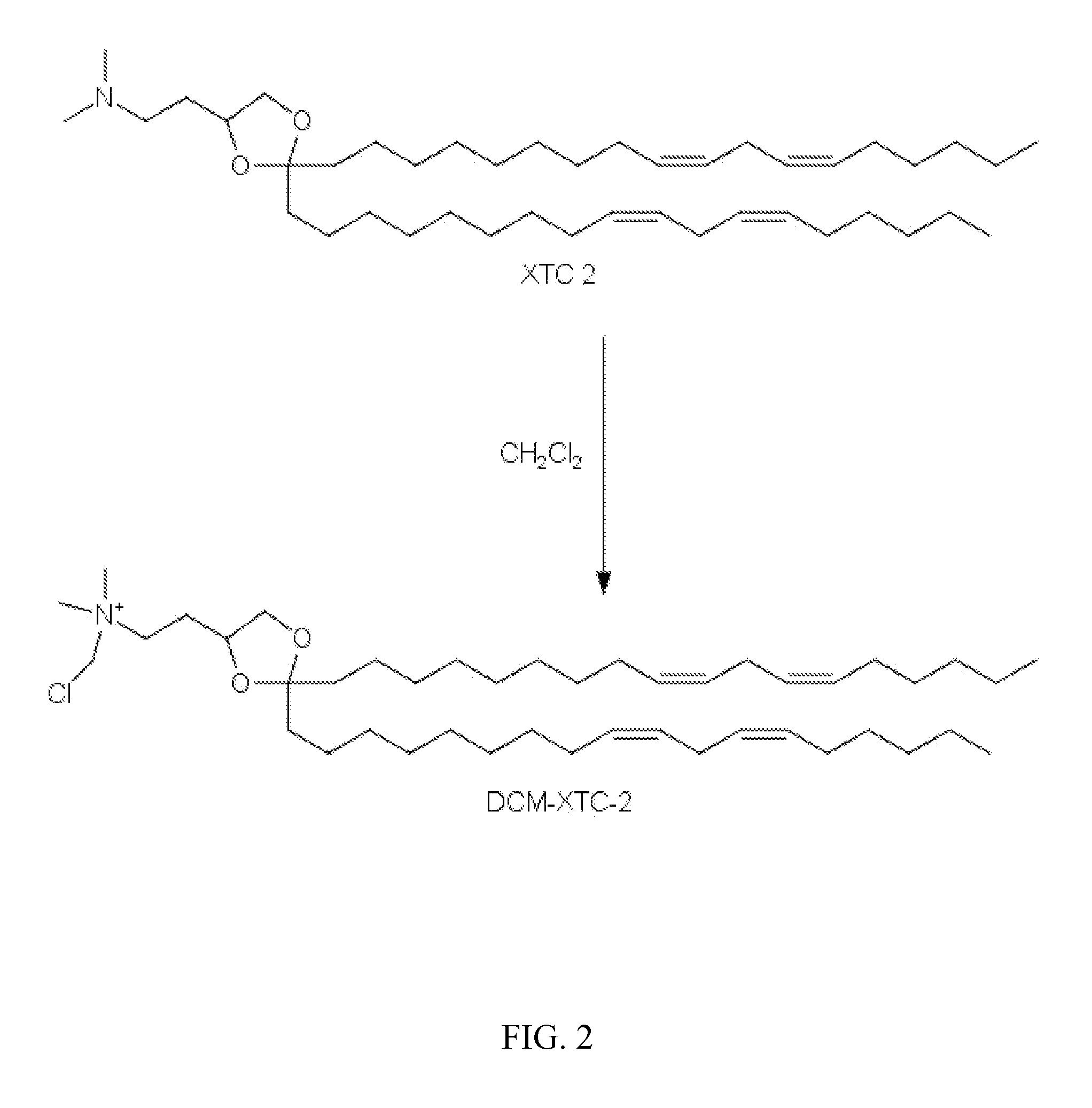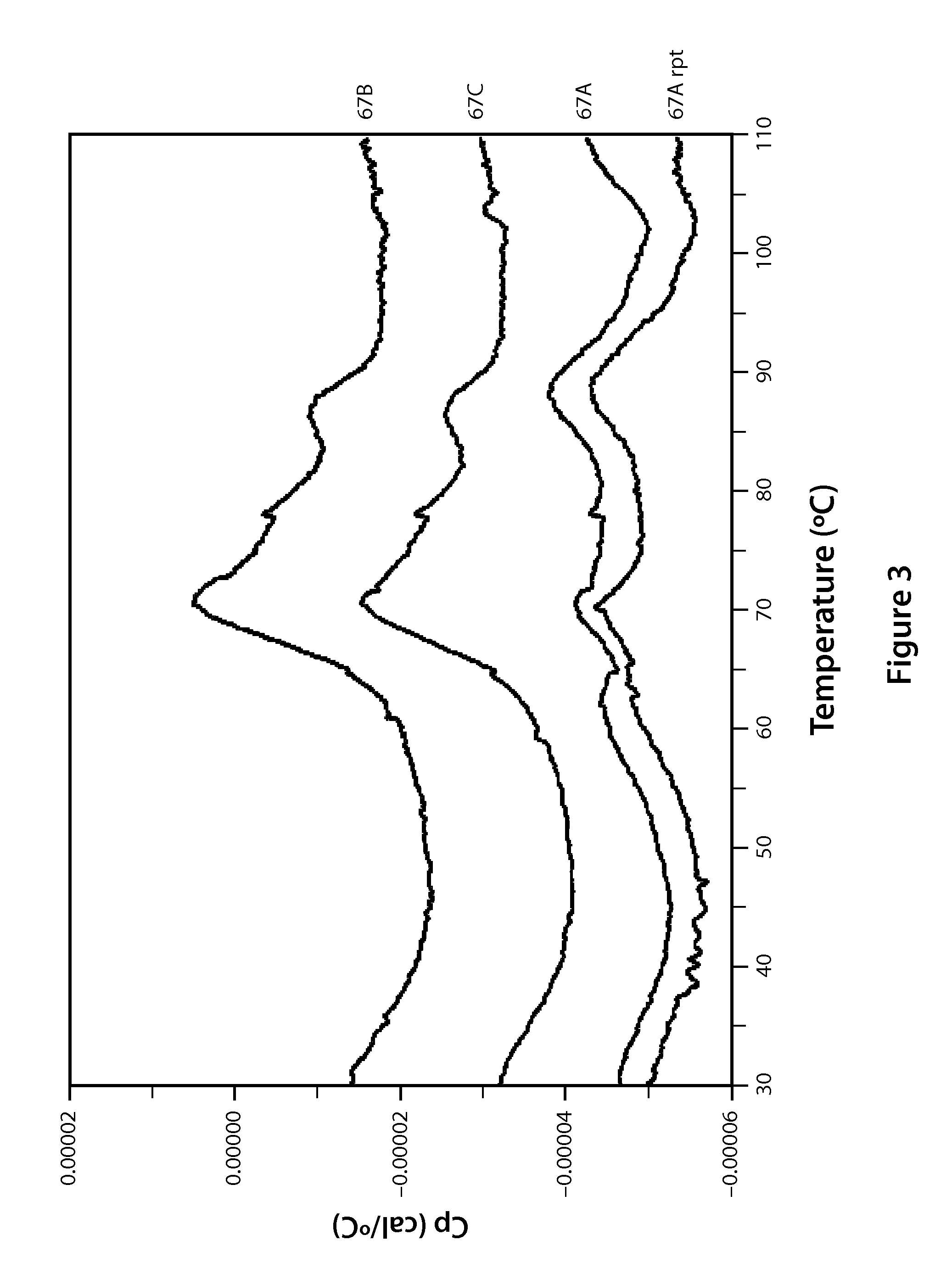Compounds and Compositions for Nucleic Acid Formulation and Delivery
- Summary
- Abstract
- Description
- Claims
- Application Information
AI Technical Summary
Benefits of technology
Problems solved by technology
Method used
Image
Examples
example 1
Synthesis of 2-(2,2-di((9Z,12Z)-octadeca-9,12-dienyl)-1,3-dioxolan-4-yl)-N,N-dimethylethanamine:
[0143]
[0144]This lipid is known and can be prepared using methods published in International Publication No. WO 2010 / 088537 (Int. App. No. PCT / US2010 / 022614) by Akinc et al.; International Publication No. WO 2010 / 048536 (Int. App. No. PCT / US2009 / 061897) by Manoharan et al.; International Publication No. WO 2010 / 042877 (Int. App. No. PCT / US2009 / 060251) by Hope et al.; and / or Semple, SC et al. Nature Biotechnology, 28, 172-176 (2010), all of which are hereby incorporated by reference in their entirety; or by using alternative methods known in the art.
example 2
Synthesis of 2-(2,2-di((9Z,12Z)-octadeca-9,12-dienyl)-1,3-dioxolan-4-yl)-N-ethyl-N,N-dimethylethanamonium iodide:
[0145]
[0146]In accordance with scheme 1 disclosed previously, 2-(2,2-di((9Z,12Z)-octadeca-9,12-dienyl)-1,3-dioxolan-4-yl)-N,N-dimethylethanamine (2.6 g) was dissolved in heptane (2.6 mL), the solution was cooled to 0° C., and added ethyl iodide (3.4 mL). The reaction was allowed to warm up to ambient temperature, then heated to 40° C. for 16 h. TLC (DCM-MeOH 9:1) showed complete conversion. The solution was concentrated under vacuum at 25° C., then redissolved in heptane and concentrated 3× with heptane to remove volatile byproducts to obtain 2-(2,2-di((9Z,12Z)-octadeca-9,12-dienyl)-1,3-dioxolan-4-yl)-N-ethyl-N,N-dimethylethanamonium iodide, 3.2 g. HPLC 89.61% (CAD detector); MS 670.7.
[0147]In accordance with scheme 1 disclosed previously, 2-(2,2-di((9Z,12Z)-octadeca-9,12-dienyl)-1,3-dioxolan-4-yl)-N,N-dimethylethanamine (2.6 g) was dissolved in heptane (2.6 mL), the sol...
example 4
Synthesis of N-(chloromethyl)-2-(2,2-di((9Z,12Z)-octadeca-9,12-dienyl)-1,3-dioxolan-4-yl)-N,N-dimethylethanamonium chloride
[0149]
[0150]In accordance with scheme 1 disclosed previously, 2-(2,2-di((9Z,12Z)-octadeca-9,12-dienyl)-1,3-dioxolan-4-yl)-N,N-dimethylethanamine (3 g) was dissolved in dichloromethane (50 mL). The clear solution was heated to 40° C. for 24 h, and then continued stirring at ambient under nitrogen for 7 days. The reaction was concentrated under vacuum and the solvent was exchanged to heptane and purified on 50 g of flash silica gel pretreated with heptane. The heptane solution (40 mL) was applied directly to the chromatography column containing 50 g of silica gel pretreated with heptane and further eluted with heptane. A total 70 mL of eluate were collected and concentrated to obtain 1.7 g of N-(chloromethyl)-2-(2,2-di((9Z,12Z)-octadeca-9,12-dienyl)-1,3-dioxolan-4-yl)-N,N-dimethylethanamonium chloride as a colorless gum. HPLC 96.38% (CAD detector); MS 690.
PUM
| Property | Measurement | Unit |
|---|---|---|
| Composition | aaaaa | aaaaa |
Abstract
Description
Claims
Application Information
 Login to View More
Login to View More - R&D
- Intellectual Property
- Life Sciences
- Materials
- Tech Scout
- Unparalleled Data Quality
- Higher Quality Content
- 60% Fewer Hallucinations
Browse by: Latest US Patents, China's latest patents, Technical Efficacy Thesaurus, Application Domain, Technology Topic, Popular Technical Reports.
© 2025 PatSnap. All rights reserved.Legal|Privacy policy|Modern Slavery Act Transparency Statement|Sitemap|About US| Contact US: help@patsnap.com



